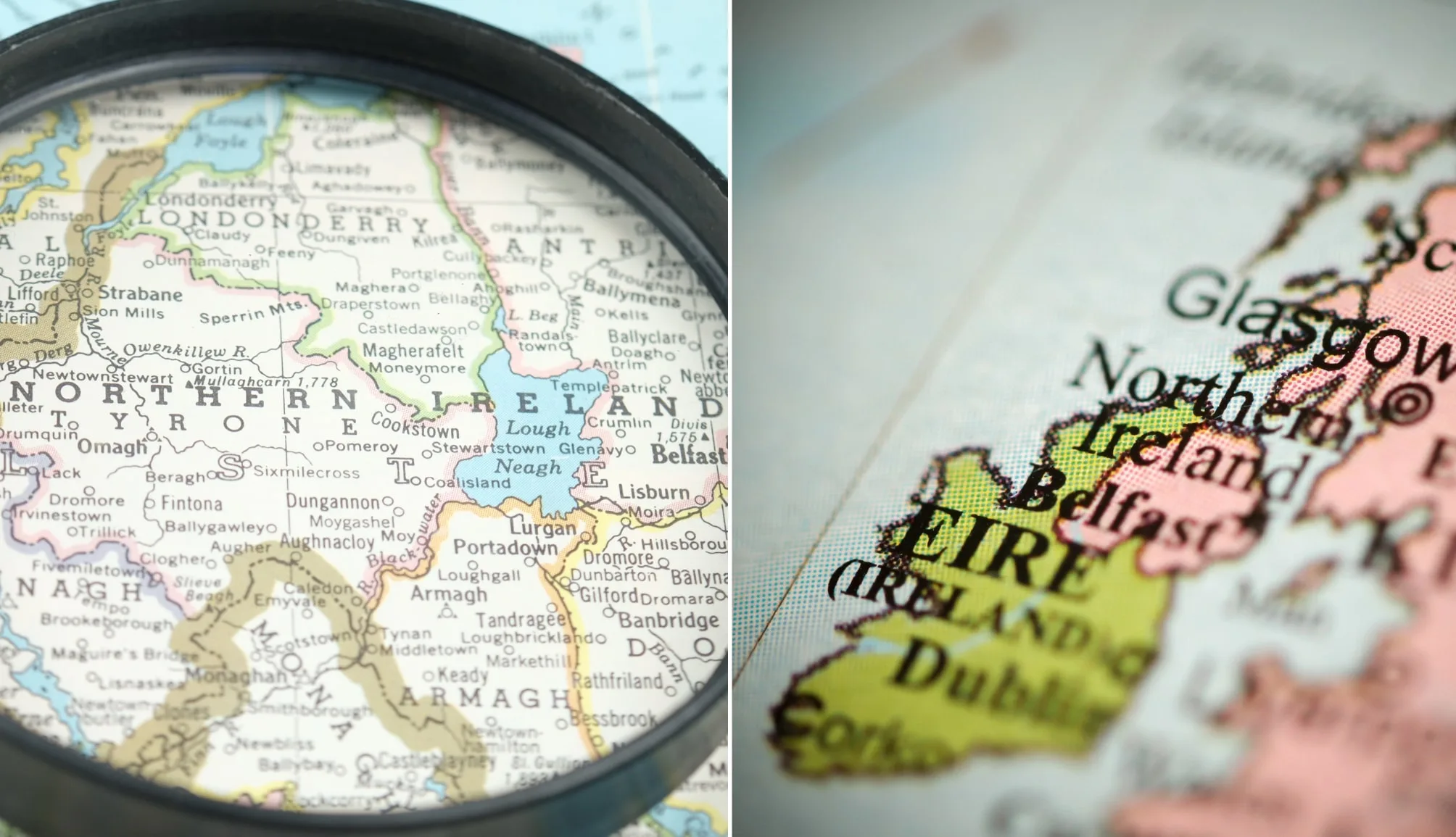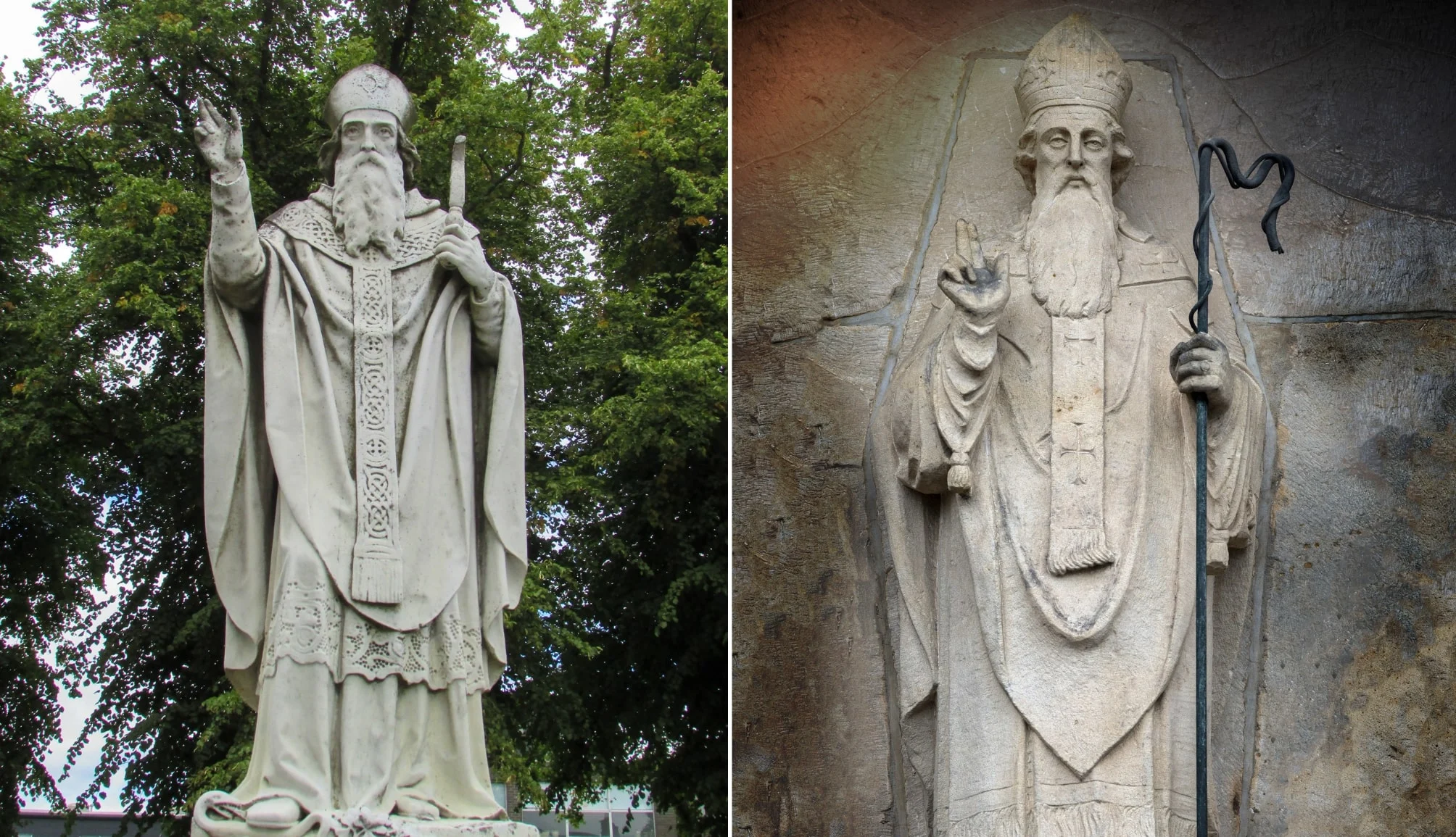We get countless emails every year asking can you wear orange on St. Patrick’s Day.
The honest answer is you can do whatever you like, but most people do tend to wear green on St. Patrick’s Day.
However, if you’d like to know why some people wear orange on St. Patrick’s Day in Ireland and elsewhere, you’ll find all you need to know below.
Some quick-need-to-knows about wearing orange on St Patrick’s Day

Photos via Shutterstock
Before we get into is it OK to wear orange on St. Patrick’s Day, lets get you up-to-speed quickly:
1. It’s a tradition that dates back to the 17th century
When the Protestant William of Orange conquered the Catholic James II at the Battle of the Boyne, his colour, orange, would be immortalised for centuries.
2. It all boils down to religion
The colour orange is symbolic of the Protestant community and their heritage while the colour green on the Irish flag represents the Catholic community.
3. My two cents
We tend to get emails from people living outside of Ireland asking ‘Can you wear orange on St. Patrick’s Day?’. Personally, I wouldn’t, as I associate the colour green with St. Patrick. You can of course do whatever makes you happy!
Why some people wear orange on St. Patrick’s Day

Photos via Shutterstock
Now that we have the need-to-knows out of the way, lets go into more of the detail around wearing orange on St. Patrick’s Day.
It all comes back to William of Orange and then the partition of Ireland in 1921.
It all begins with William of Orange

Photos via Shutterstock
The colour orange has been closely tied to Ireland’s Protestant community since way back in 1690.
It was then that William of Orange (the King of England, Scotland and Ireland) defeated the Roman Catholic King James II in what is known as the Battle of the Boyne.
The ‘Orange’ in his name is actually a reference to the ‘Principality of Orange’ a feudal state in the South of France.
Since his victory in the Battle of the Boyne, William of Orange has been an iconic figure within Protestant culture, as has the colour orange.
It continues with the partition of Ireland

Photos via Shutterstock
If you’ve read our guide to the differences between Ireland vs Northern Ireland, you’ll be aware that they are two countries on the one island.
The partition has been in place since May of 1921 when the UK’s Government of Ireland Act 1920 came into play.
The six counties of the newly formed Northern Ireland had a unionist majority who wanted to remain in the United Kingdom.
Those that wished to remain were also generally from the Protestant descendants of colonists from Britain.
The Irish flag shows both colours

Photos via Shutterstock
A vertical tricolour of green (at the hoist), white and orange, the Irish flag was created in 1848 and was intended to symbolise the inclusion and hoped-for union between Roman Catholics (symbolised by green) and Protestants (symbolised by orange).
When presented to him, Irish nationalist Thomas Francis Meagher said “The white in the centre signifies a lasting truce between Orange and Green and I trust that beneath its folds the hands of Irish Protestants and Irish Catholics may be clasped in generous and heroic brotherhood”.
St Patrick himself wore blue, so you can wear what you want

Funnily enough, when St. Patrick’s Day was first recognised in Ireland the original colour associated with the festivities was the patron saint’s signature shade of blue. It wouldn’t change to green until years later.
But don’t forget that when St Patrick was born in the 4th century, there was no Catholic/Protestant divide. Hence why St Patrick is able to be celebrated, no matter what colour you wear.
FAQs about the St. Patrick’s Day orange connection
We’ve had a lot of questions over the years asking about everything from ‘Is wearing orange on St. Patrick’s Day offensive?’ to ‘Where does blue come into it?’.
In the section below, we’ve popped in the most FAQs that we’ve received. If you have a question that we haven’t tackled, ask away in the comments section below. Here are some related reads you should find interesting:
- 73 Funny St. Patrick’s Day Jokes For Adults And Kids
- The Best Irish Songs And The Best Irish Films Of All Time For Paddy’s Day
- 8 Ways That We Celebrate St. Patrick’s Day In Ireland
- The Most Notable St. Patrick’s Day Traditions In Ireland
- 17 Tasty St. Patrick’s Day Cocktails To Whip Up At Home
- How To Say Happy St. Patrick’s Day In Irish
- 5 St. Patrick’s Day Prayers And Blessings For 2024
- 17 Surprising Fact’s About St. Patrick’ Day
- 33 Interesting Facts About Ireland
What does orange mean on St. Patrick’s Day?
The colour orange in the Irish flag represents Ireland’s Protestant community. Some people may choose to wear orange on March 17th to celebrate both St. Patrick and their heritage.
Can you wear orange on St. Patty’s Day?
Yes. It’s far more offensive to call it ‘St. Patty’s Day’ than it is to wearing orange on St. Patrick’s Day. Green is more widely associated with the day globally, however.
Is orange a St. Patricks Day color?
Although green is the main colour that’s associated with March 17th, some people will wear orange on St. Patrick’s Day either 1, to celebrate their Protestant heritage along with Ireland’s Patron Saint or 1, because they have no green clothes.
What color should you not wear on St. Patrick’s Day?
Green is the color most commonly worn on March 17th. While there are certain parts of Ireland where I personally wouldn’t wear orange on St. Patrick’s Day, there likely won’t be an issue outside of Ireland if you do.
Keith O’Hara has lived in Ireland for 35 years and has spent most of the last 10 creating what is now The Irish Road Trip guide. Over the years, the website has published thousands of meticulously researched Ireland travel guides, welcoming 30 million+ visitors along the way. In 2022, the Irish Road Trip team published the world’s largest collection of Irish Road Trip itineraries. Keith lives in Dublin with his dog Toby and finds writing in the 3rd person minus craic altogether.

